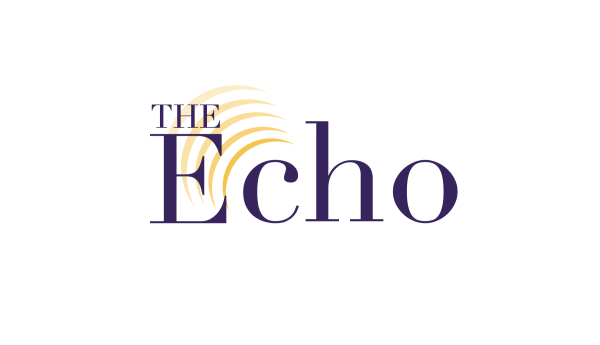With Hispanics being among the fastest-growing demographic in the United States, per the U.S. Census, the study abroad market needs to begin to target Latino students with the same enthusiasm and intensity with which they reach other communities.
According to a study by the National Center for Education Statistics, a combined 3.8 million Latinos and Hispanics are enrolled in higher education as of 2022. That means roughly 19.6% of students pursuing degrees belong within this demographic, according to a NAFSA report.
Despite that, only 11.9% of Hispanic/Latino Americans study abroad outside of the United States. Among the leading reasons are a lack of knowledge of resources, no proper advertising for Latinos, and little to no familial support.
“A lot of students of color, Latinx students, maybe first time that they’re in college, first-gen students, and so their parents don’t necessarily understand why study abroad would be important for them,” Director for the Office of Education Abroad Matthew Yates said.
In 2020, a study for the National Center for Education Statistics found that of Hispanic students in part-time undergraduate programs, 74% were employed. Similarly, of full-time students employed, Hispanics made up 43%– the highest percentage of any full-time students within the study.
“A lot of students who are Latinx, not all, of course, but a lot of them are caregivers to members of their families, or they have multiple jobs as they’re in school,” Yates said.
Another significant issue for the Latino population is the probability of being undocumented. Though not all Latino students are undocumented and vice versa, not all undocumented students are of Latino descent– it is a concern that plagues a significant portion of the population.
In California, there are nearly 100,000 undocumented students enrolled in higher education, according to a report by the California Student Aid Commission.
“Another way in which we try to think about the different barriers that face Latinx students, some of them may be undocumented, as could students who are of other races and ethnicities, of course. So one of the things that we implemented was a process here that didn’t exist before, to help students who do not have documentation to be able to leave the country. There are lots of risks that come with that,” Yates said.
Among the various programs offered through the Office of Education Abroad is a trip to Puerto Rico with a partner institution, Spanish Studies Abroad. Students from all demographics can partake in this trip as the Puerto Rican islands are a territorial part of the United States. This means students with and without passports qualify to participate. It is truly exciting to have a study abroad opportunity available to DACA and undocumented students, especially at a time when their existence has been weaponized within politics.
Another barrier Latino students face is the lack of awareness and resources on the topic. When I first told my family I wanted to study abroad they thought I was crazy. Largely because I had never left the country on my own, but also because they weren’t sure how to support me– a language barrier is the most troubling aspect.
California Lutheran University prides itself on being a Hispanic Serving Institution and catering to Hispanic and Latino communities, but information is often only available in English. Though they have gotten significantly better at this throughout the years, there can always be improvements and that is something Yates said he focused on when coming into Cal Lutheran in 2020.
“I thought there would be folks on campus, staff, who would do [translations] as an HSI, and it turns out there wasn’t at the time, which was kind of sad,” Yates said. “Families are very important for all students … So we’re trying to think, how can we reach out to the student as a holistic person, not just a student or a consumer, but as a person who is part of a family network.”
Familial support aside, studying abroad is expensive. While various scholarships are available for students to help minimize the financial burden, it isn’t enough. Especially when many underprivileged or minority communities– particularly Latinos– are susceptible to technological gaps, language barriers, and a lack of general visibility from leaders.
“Trying to think how can we create opportunities for students that they hopefully will appreciate and are affordable. And then think about not just Latino and Hispanic students as a block, but as a diverse group of students with lots of different needs from various different places,” Yates said.
As a child of immigrant parents, with a deep ancestral background to a Latin American country, it’s often difficult for me to hear the words “Latino” and “underprivileged” within the same sentence. Not because of shame or disgust, but rather because it means that our situation is real. And it isn’t changing.
This is an unfortunate truth. Many Latinos do live below the poverty line and studying abroad can be seen as a fantasy rather than a plausible reality.
Then there’s the factor of leaving your family and leaving aspects of your culture that you may not find in other parts of the world. My study abroad experience was in one of Europe’s largest cultural hubs, but if you asked me how many Mexican or Latino people I met in London, I would say maybe one, if that. So while I was having the time of my life traveling to different countries every week and exploring England, I never truly felt at ease.
Assistant Director of the OEA program at Cal Lutheran, Azar Amir-Mokri began her traveling journey at 14 years old when her family sent her to study in Austria following the outbreak of war in her home country. According to her, this homesick feeling stuck with her throughout many of her travels.
“People were very gracious and nice, but I never felt home. I always felt I’m a guest somewhere, because the first question you are encountered with is, ‘where are you from?’ That implies that you don’t look like us. You look different. So I always felt like a guest wherever I was,” Amir-Mokri said.
This experience is not unique to Latino people, but I think it plays a large role in where we choose to travel. Furthermore, not acknowledging this feeling within this demographic deters many from even applying for study-abroad programs.
“I just want the students who want to go and study abroad to not be afraid of discovering and meeting other cultures and to see that at the end of the day, we are all humans in different circumstances,” Amir-Mokri said.
According to a Smithsonian article, there are 60 million Latino people in the United States. 3.8 million are students in college. Yet the number of students abroad does not accurately reflect our race and ethnic diversity.
Growing up in Los Angeles, it’s impossible to not have strong ties with my culture and being accustomed to consuming Spanish media daily, it was a culture shock to be thrown into a world that did not prioritize this. While I missed what I knew, it was undeniably the most rewarding experience to be able to learn about new cultures and countries.
“They have very strong ties with their families, it’s mostly a fear of going somewhere they’ve never been before, and I realize through conversations with people who have been in those places, you can easily help with that. And then try to, you know, just bring out this enthusiasm to discover those places, try it out,” Amir-Mokri said.
The bottom line is that the study abroad market needs to begin to view its Latino audience as curious students rather than just inclusivity numbers and truly begin to emphasize their participation in and struggles with studying abroad.
To do this would require extra funding to predominantly Latino schools, translations of documents and flyers, and ensuring these students have a support system both at home and abroad. It will be taxing, but worth it when culture gets to exceed the lines of borders.
Among the most helpful programs I found during my research were HACU Study Abroad Scholarships, an organization that provides Hispanic college students with financial opportunities to travel and much more.
Likewise, the Gilman Scholarship is a program run by the United States that provides students of different socioeconomic backgrounds with funds to pursue studying abroad. The program also helps recipients connect to the U.S. while abroad and supports them upon their return to the States.
These are just a few of the programs out there that can be useful to anyone seeing this opportunity as financially impossible. However, I firmly believe that the most helpful thing the study abroad market can do for Latino students is translate all flyers, documents, and texts into Spanish and make families an active part of the conversation.
When I committed to my program in London, my mom immediately told her best friend and her response was one that stuck with me throughout my travels and when I returned home. It was even the catalyst for this article.
She said that seeing a Latina study abroad was something out of a movie, but never would she have thought someone so close to her would have that experience. To me, that says everything about why it’s so essential to target this community.













